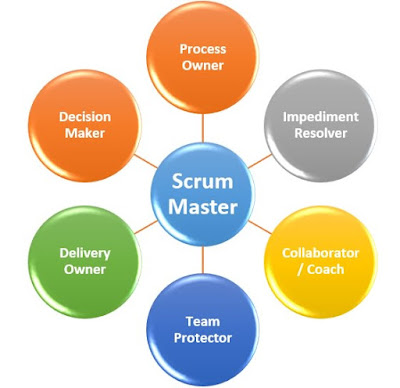Product Owner
The Product Owner role in LeSS is conceptually the same as in one-team Scrum. However, at scale the focus changes slightly toward keeping an overview and ensuring the maximum return on investment (ROI) in the product.
Scaled Product Owner
It’s common in large-scale product development for different people to pull in different directions and for subgroups to focus on local sub-optimizations. Maintaining one Product Owner with one Product Backlog supports whole-product focus.
In traditional large-scale product groups, there’s a group (often product managers) that focuses outward and a group (usually developers) that focuses inward — and never the twain shall meet. In LeSS, the one Product Owner has lots of free time to focus outward on customers and their priorities while also being able to spend some time looking inwards to the teams. He acts as a connector, bringing teams and customers/users together so the teams become more customer focused.
In contrast with other scaled Scrum approaches, it’s possible in LeSS to effectively scale the Product Owner role with just one person because there are fewer roles and positions, and less complexity.
Prioritization over Clarification
There are two key information flows in Scrum related to the Product Owner: (1) prioritizing (ordering) items in the Product Backlog and (2) clarifying items in the Product Backlog. In the first flow (prioritization), information related to profit drivers, strategic customers, business risks, and other business concerns is sought and analyzed. In the second flow (clarification), information is sought to detail the behavior and qualities of items, the user experience, and other feature design concerns.
A LeSS Product Owner focuses on thinking hard about prioritization but collaborates with the teams on clarification. Further, he encourages and helps the teams enter into a direct conversation with true users and customers for clarification. He acts as a connector, not an intermediary.
Why emphasize direct interaction between teams and customers/users? Reasons include: (1) avoiding information loss from handoffs, (2) fostering co-creation of solutions to real customer problems, and (3) improving motivation and empathy for customers by having developers collaborate with them directly.
It’s worth noting that when the teams do most of the clarification work the Product Owner has more time and energy to focus on the big picture, continuously prioritizing and exploring new and strategic opportunities.




Comentarios
Publicar un comentario